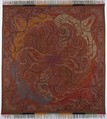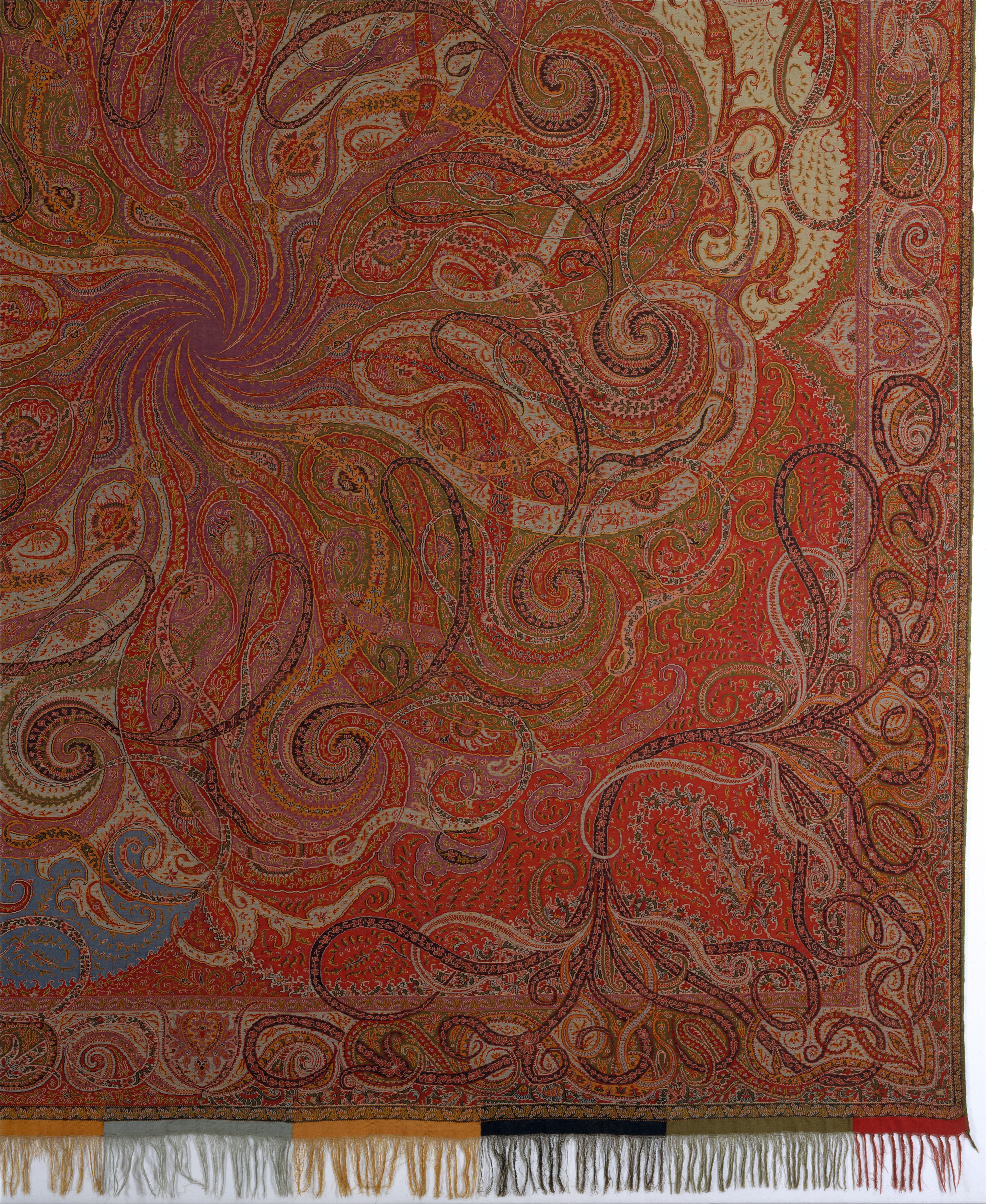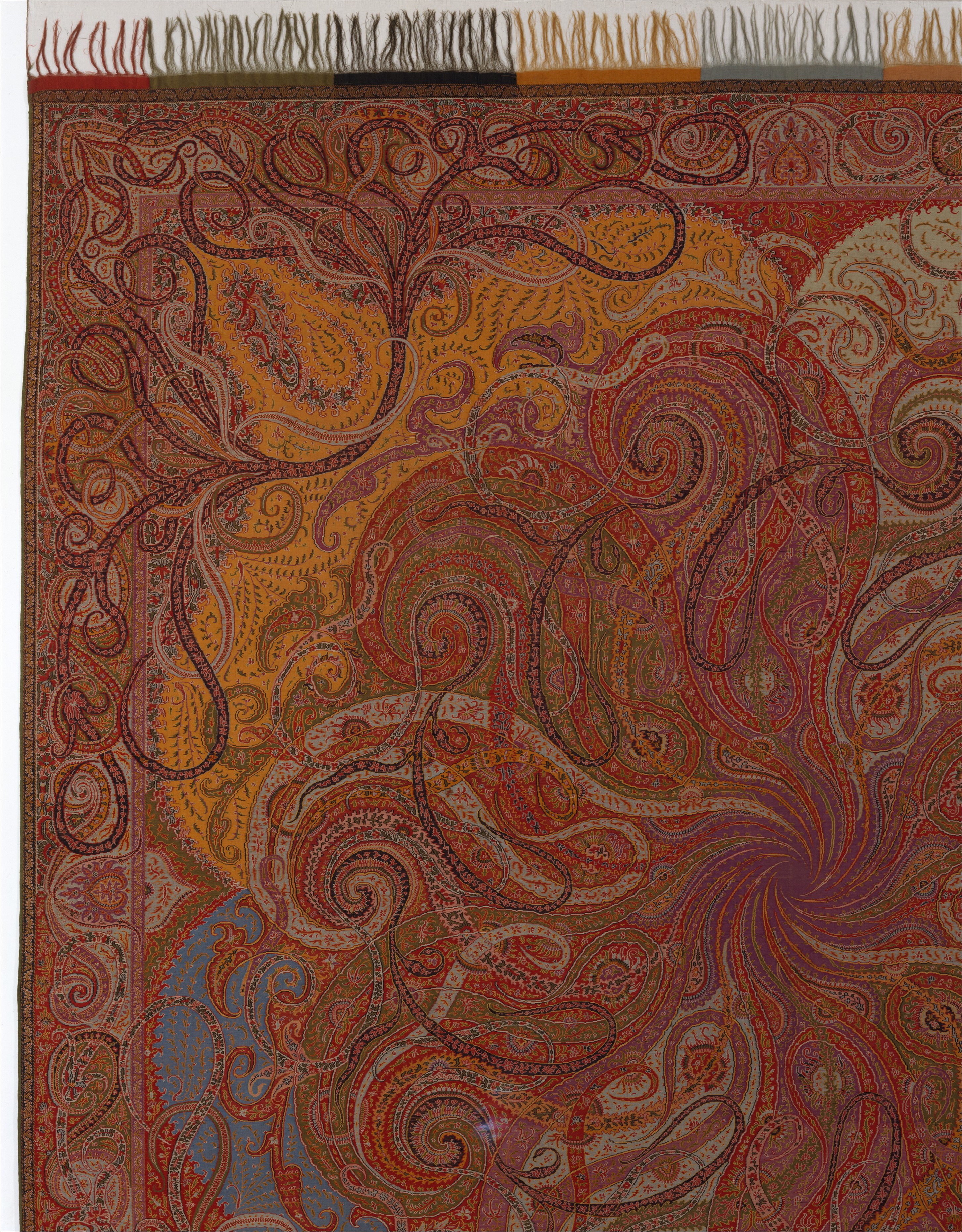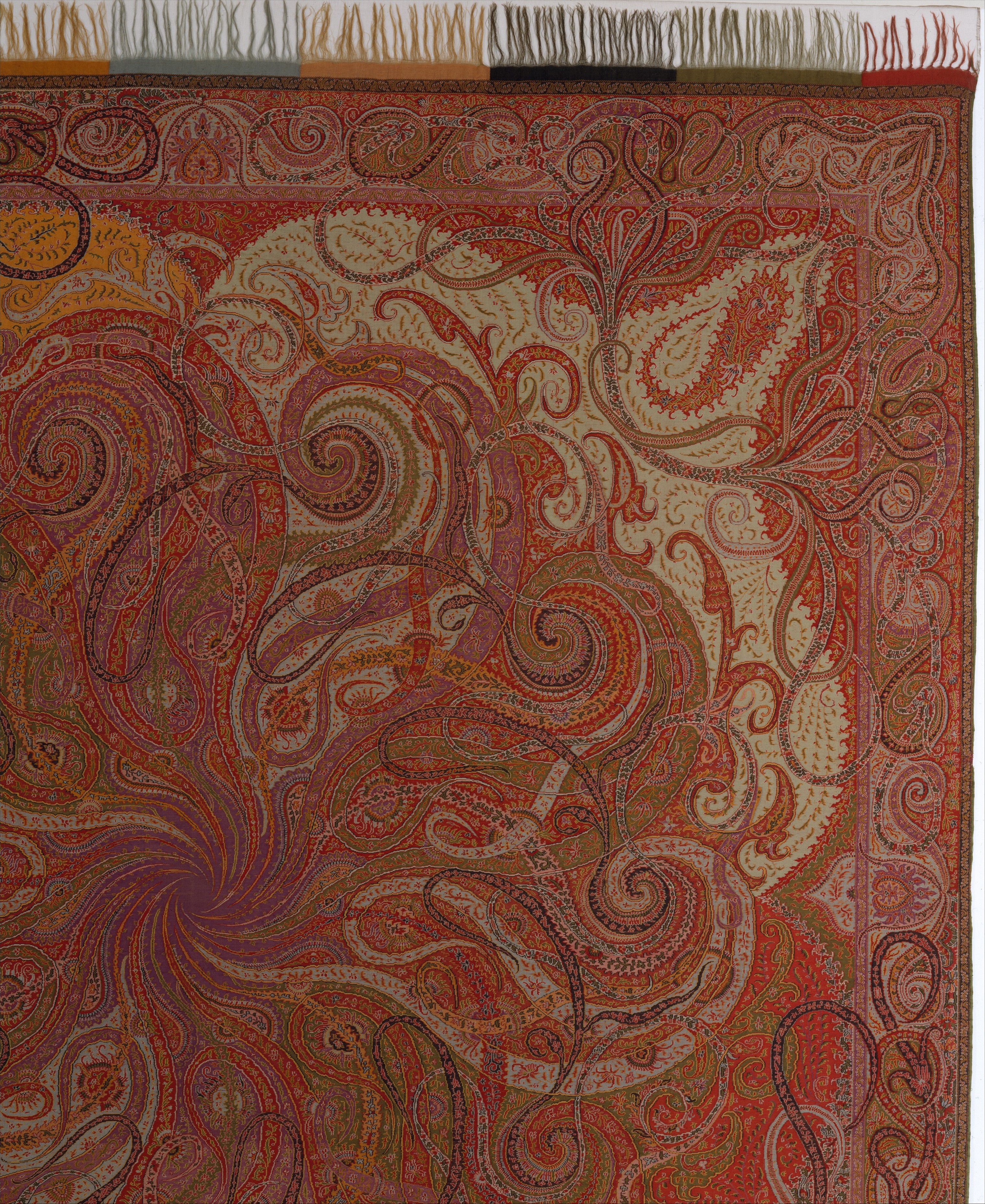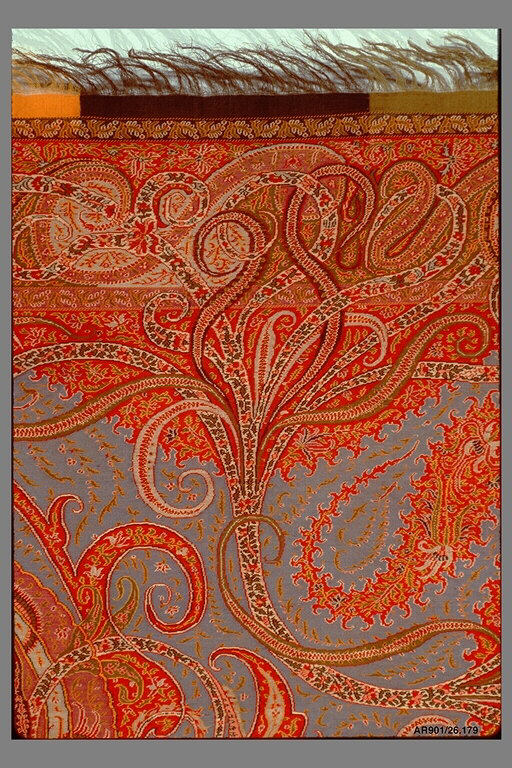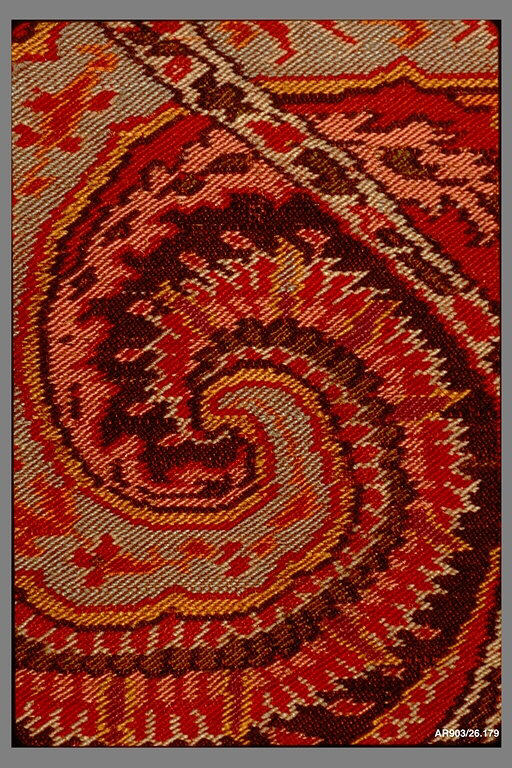Four Seasons shawl
Not on view
A shawl was a required fashion accessory during much of the nineteenth century. In the early 1800s long, rectangular, stolelike examples, hand-woven in India with boteh (pine cone) or paisley patterned end panels, were coveted for use with Empire-style dresses. This style was followed by the square shawl and then, with the introduction of wider skirts, by "plaids"—a term used not to describe the pattern but to connote a very large and long shawl, usually ten feet by five feet.
Stylistically, this shawl demonstrates both a "four seasons" layout—in which the ground color is different in each of the quadrants—and an organization a la pivot, indicating the manner in which the vegetation swirls around a central point. The design for the shawl is probably French, but it may have been purchased by a Scottish manufacturer and jacquard-woven in Paisley.
[Alice Zrebiec, 1995]
This image cannot be enlarged, viewed at full screen, or downloaded.
This artwork is meant to be viewed from right to left. Scroll left to view more.
